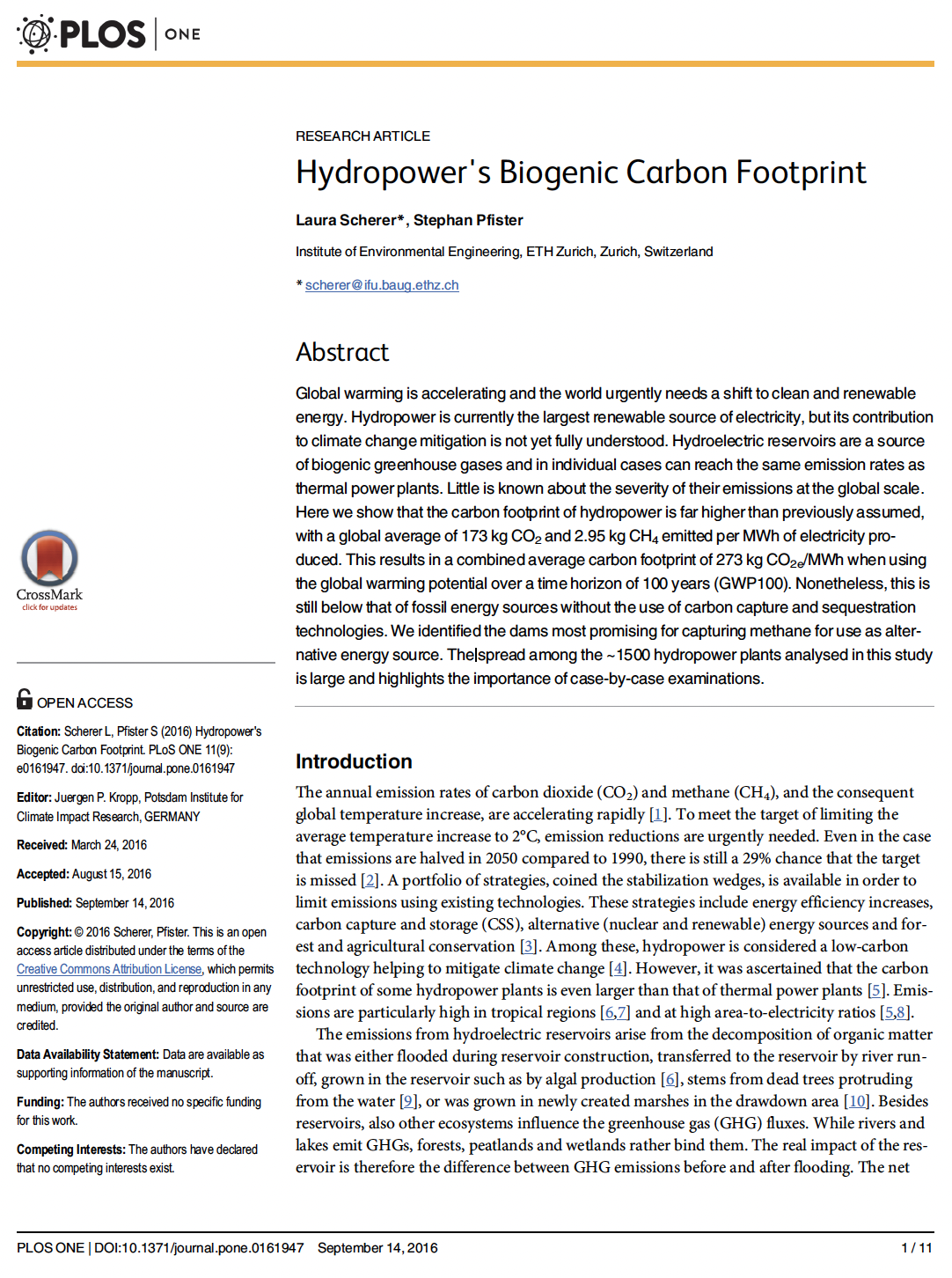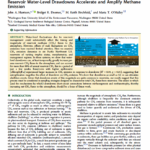Abstract: Global warming is accelerating and the world urgently needs a shift to clean and renewable energy. Hydropower is currently the largest renewable source of electricity, but its contribution to climate change mitigation is not yet fully understood. Hydroelectric reservoirs are a source of biogenic greenhouse gases and in individual cases can reach the same emission rates as thermal power plants. Little is known about the severity of their emissions at the global scale. Here we show that the carbon footprint of hydropower is far higher than previously assumed, with a global average of 173 kg CO2 and 2.95 kg CH4 emitted per MWh of electricity produced. This results in a combined average carbon footprint of 273 kg CO2e/MWh when using the global warming potential over a time horizon of 100 years (GWP100). Nonetheless, this is still below that of fossil energy sources without the use of carbon capture and sequestration technologies.We identified the dams most promising for capturing methane for use as alternative energy source. The spread among the ~1500 hydropower plants analysed in this study is large and highlights the importance of case-by-case examinations.
Authors: Laura Scherer, Stephan Pfister
doi:10.1371/journal.pone.0161947


